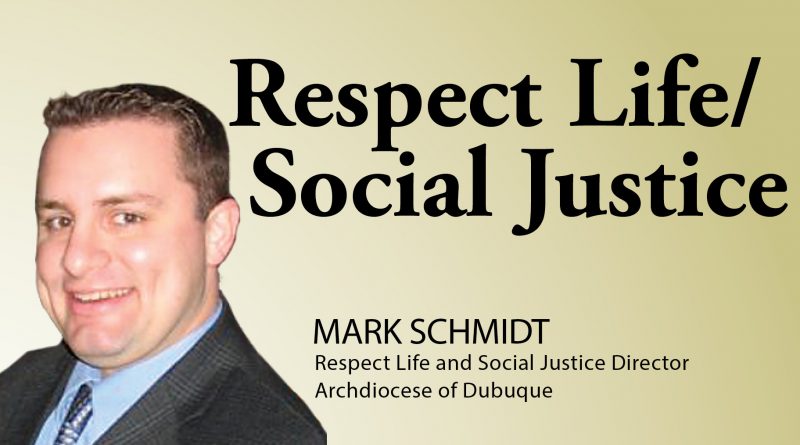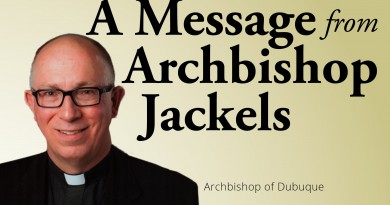Fighting human trafficking with a culture of encounter and life
Many people’s image of human trafficking is likely what they have seen on movies such as “Taken.” While there are examples of such experiences happening (minus Liam Neeson taking down a trafficking ring all by himself), how many people end up being trafficked is far less dramatic. One such group that is often overlooked is the vulnerability of young people who have either runaway from home, were forced out by family/foster parents or age out of the foster care system. One of the leading risk factors regarding human trafficking is homelessness. The risk for both sex and labor trafficking are especially high for homeless youth (ages 12-25). Homeless youth’s vulnerability is often preyed upon by those recruiting for trafficking. The promise of a place to stay, food, stability and/or protection are just some of the ways that homeless youth find themselves in a trafficking situation.
One way in which we can fight human trafficking is the building up of a culture of encounter and culture of life towards vulnerable groups. This is especially the case with (Lesbian Gay Bisexual Transgender and Intersex) LGBTI youth. In the pastoral message “Always Our Children” the U.S. bishops’ Committee on Marriage and Family recognized this reality. “How can you best express your love — itself a reflection of God’s unconditional love — for your child? At least two things are necessary. First, don’t break off contact; don’t reject your child. A shocking number of homosexual youth end up on the streets because of rejection by their families.”
According to the anti-trafficking group Polaris, the U.S. State Department, the National Alliance to End Homelessness, among other organizations and agencies, the risk for trafficking among youth is even greater for those who identify with the LGBTI community, in part because LGBTI youth are disproportionately more likely to become homeless. Various studies show that LGBTI make up between 30-40 percent of homeless youth while being a much smaller population overall. Agencies that work with homeless youth report that the most prevalent reason for LGBTI youth homelessness is their being forced out by their family after coming out as LGBTI. This population of youth also struggle to find assistance because of unjust discrimination against them by service agencies, their local community, or other entities that either willfully or ignorantly reinforce stereotypes or reject them outright.
The United States State Department says, in a 2017 fact sheet, that: “The cumulative effects of homophobia and discrimination make LGBTI persons particularly vulnerable to traffickers who prey on the desperation of those who wish to escape social alienation and maltreatment.”
While there are many factors that contribute to trafficking and people from all walks of life and backgrounds have been victims of trafficking, one way to help reduce human trafficking in our community, nation and world is to build a culture of encounter so that people who identify as members of the LGBTI community are not marginalized and do not feel rejected, but rather are loved and cherished just as every other person made in the likeness and image of God. There is no conflict or contradiction between the church’s teaching on human sexuality and its message to love and care for our family and our neighbors who are part of the LGBTI community.
This culture of encounter must go beyond mere tolerance. “It is not sufficient only to avoid unjust discrimination.” Homosexual persons “must be accepted with respect, compassion and sensitivity” (Catechism of the Catholic Church, no. 2358). “They, as is true of every human being, need to be nourished at many different levels simultaneously. This includes friendship, which is a way of loving and is essential to healthy human development. It is one of the richest possible human experiences” (“Always Our Children”).
It can be helpful to reflect on our own actions and words. Does our language treat others with respect, or do we make jokes at their expense? Do we try to come up with clever slogans or phrases to teach or promote our belief and understanding on human sexuality, or do we take into consideration the feelings and prior harm that members of the LGBTI community experience on a daily basis. Do we make dismissive or sarcastic analogies about identity? Do we welcome others fully into the community?
Our words and actions, even if not intentionally malicious, can influence the way we act towards people who identify with the LGBTI community.
While human trafficking is much broader and affects people beyond homeless LGBTI youth, we can as a society help to reduce trafficking by building communities and families that show love and compassion to those in the LGBTI community. Ending LGBTI youth homelessness is an important aspect needing addressing in the fight against human trafficking.
The Formation for All session for February addresses human trafficking. To participate in sessions available for all ages go to: dbqarch.org/rlsj/formation.



